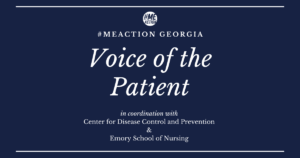How would the proposed NIH and CDC Budget Cuts affect ME research?
News organizations recently reported that President Donald Trump’s administration has asked the House and Senate to approve budget cuts for 2017 of $1.232 billion for the National Institutes of Health (NIH) and $314 million for the Centers for Disease Control and Prevention (CDC). What do the proposed cuts to NIH and CDC mean for Myalgic Encephalomyelitis (ME)* research?
The CDC “Chronic Fatigue Syndrome” program was mentioned specifically in the March 23rd White House budget proposal for 2017 that was obtained by Politico. The proposal says that CDC Public Health Program cuts “would eliminate or reduce less effective or duplicative research and disease-specific programs such as the Prevention Research Centers, Chronic Fatigue Syndrome, Cancer Registries, Prion Disease, Injury Control Research Centers, Climate Change, and Tobacco Prevention Research.” The proposed 2017 and 2018 NIH budgets do not mention the ME/CFS program by name, however the large cuts to the NIH budget in the White House budget proposal would likely have a significant negative impact on research funding for the disease.
The fiscal year for the government starts on October 1st of the previous year, so the 2017 fiscal year (FY17) goes from Oct. 1, 2016 – Sept. 30, 2017. For this fiscal year, NIH, CDC and other federal agencies have been operating on a “continuing resolution,” keeping 2017 spending at 2016 amounts. The continuing resolution will expire on April 28, by which time Congress will either have to extend the continuing resolution, pass a 2017 budget or shut down the government.
The White House budget proposal is not expected to pass as-is, based on comments from both Republicans and Democrats in Congress, but if a 2017 budget is passed, it still could include some of the cuts requested by the White House. These may or may not include the elimination of the CDC “Chronic Fatigue Syndrome” program (which has a budget of $5.4 million a year) and general cuts to the NIH.
NIH cuts could be devastating
The NIH has more control of how their budget is spent than the CDC and most diseases do not have money earmarked for them in the Congressional NIH budget. Currently, the primary methods through which NIH supports ME research are through two recently issued Request for Applications (RFAs) and through individual investigator grants. The RFAs are for two or three new Collaborative Research Centers (CRCs) and one Data Management and Coordinating Center.
Even if the proposed cuts to NIH are passed for FY17, the first year of the CRCs and the Data Management Center will be funded, according to Vicky Whittemore, who is coordinating the NIH’s ME/CFS grant budget. Previously approved individual research grants have already been funded for FY17, but a budget cut for the current year would likely lower the number of new grants that could be funded since the White House proposal includes a $1.182 billion cut to research grants. NIH grants are a key source of funding for ME/CFS researchers. According to an analysis done by Jennie Spotila, NIH spent $7,637,590 on ME/CFS research in FY16.
Looking ahead, the president’s proposed $5.8 billion NIH budget cut for FY18 (which is roughly 20% of their current budget) would likely have a large impact on future ME/CFS research at NIH. The CRCs and the Data Management and Coordinating Center are only guaranteed funding for the current year. Funding for the future years is estimated to total $24 million dollars, but is dependent on congressional appropriations. Researchers applying to run CRCs are depending on five years of funding when they are making their plans, so a full cut or even a reduction in funding over the next four years could be devastating. In general, there will be significantly less money for new research grants and funding for these grants will become even more competitive.
The proposed cuts to the NIH budget are unpopular with both Republicans and Democrats in Congress, and it is Congress is who is responsible for the final budget decisions. The 21st Century Cures Act, which increased NIH funding, was passed last year with wide bipartisan support.
CDC Program on the chopping block
If the CDC program is defunded in the FY17 budget, long-requested projects such as updating the CDC website to reflect the latest research would likely be cancelled, but work at participating sites for the multi-site study would still go through the end of the fiscal year. The investigators working on the multi-site study have already been fully funded for the year according to Athena Gemella, a representative at CDC who answered questions from advocate Wilhelmina Jenkins on how the budget proposals would affect the CDC program.
This is currently scheduled to be the final year of the multi-site study, but Gemella said that they have been actively working on plans to extend the study. If the proposed budget does pass, the entire “CFS” program at CDC would be eliminated going forward, preventing further analysis of the data already collected by the multi-site study. This study has collected data from the Pain and Fatigue Study Center in NY, the Center for Neuro-Immune Disorders in FL and the Open Medicine Institute (OMI) consortium consisting of five clinical sites throughout the country.
We don’t know for sure why the program was mentioned by name, but it has been on the chopping block for multiple years. The program has been defunded in White House budget proposals and then eventually reinstated in Congress. It is important to note that CDC, as an agency in the executive branch of the government, is not permitted to oppose whatever budget is submitted by the White House. Two years ago, a Senate Appropriations committee staffer zeroed out CDC’s “CFS” budget because he didn’t see the disease listed in the CDC justification document and no one had contacted him about ME during the annual budget process. He eventually succeeding in getting the line item added back in after hearing from many people with ME.
The main reason the program is so vulnerable is that there haven’t been Congressional champions for ME in a number of years. The long-time lack of a champion has meant no one in Congress is making sure the disease is being appropriately addressed by federal agencies like CDC, NIH, and the FDA. One point that Gamella emphatically stated is that if there is directed language about specific programs, even if only ONE branch of Congress includes the language and not the other, CDC follows the directed language.
A champion in Congress would have considerable power to make sure that CDC and NIH are working on the needs of the ME community. Congressional champions could help ensure that the CDC program continues and could also put pressure on CDC to provide accurate medical education and clinical guidelines based on the most recent scientific information and the practices of ME experts.
What can you do?
The most important action is to reach out to your own members of Congress and educate them about the impact of the disease and the strong need for serious biomedical research. You can call or email your local or district offices to express your concern or set up a meeting. Also, many members of Congress attend town halls in their home districts, which can be a perfect time for you or a family member to ask your member of Congress to be a champion for ME. For ideas on questions you can ask, you can watch a video of Rivka Solomon asking her Senator, Ed Markey, to help ME patients at a recent town hall meeting. Click here for tips on speaking at town hall meetings. If you want to get involved or have questions please contact us at [email protected].
*MEAction has found via surveys that members of the community prefer the name ME to describe our disease. NIH uses the term “ME/CFS” and CDC uses the term “CFS,” which is why there are multiple disease names used in this article.
Image used under CC BY-SA 2.0 from https://www.flickr.com/photos/68751915@N05/6869762317





